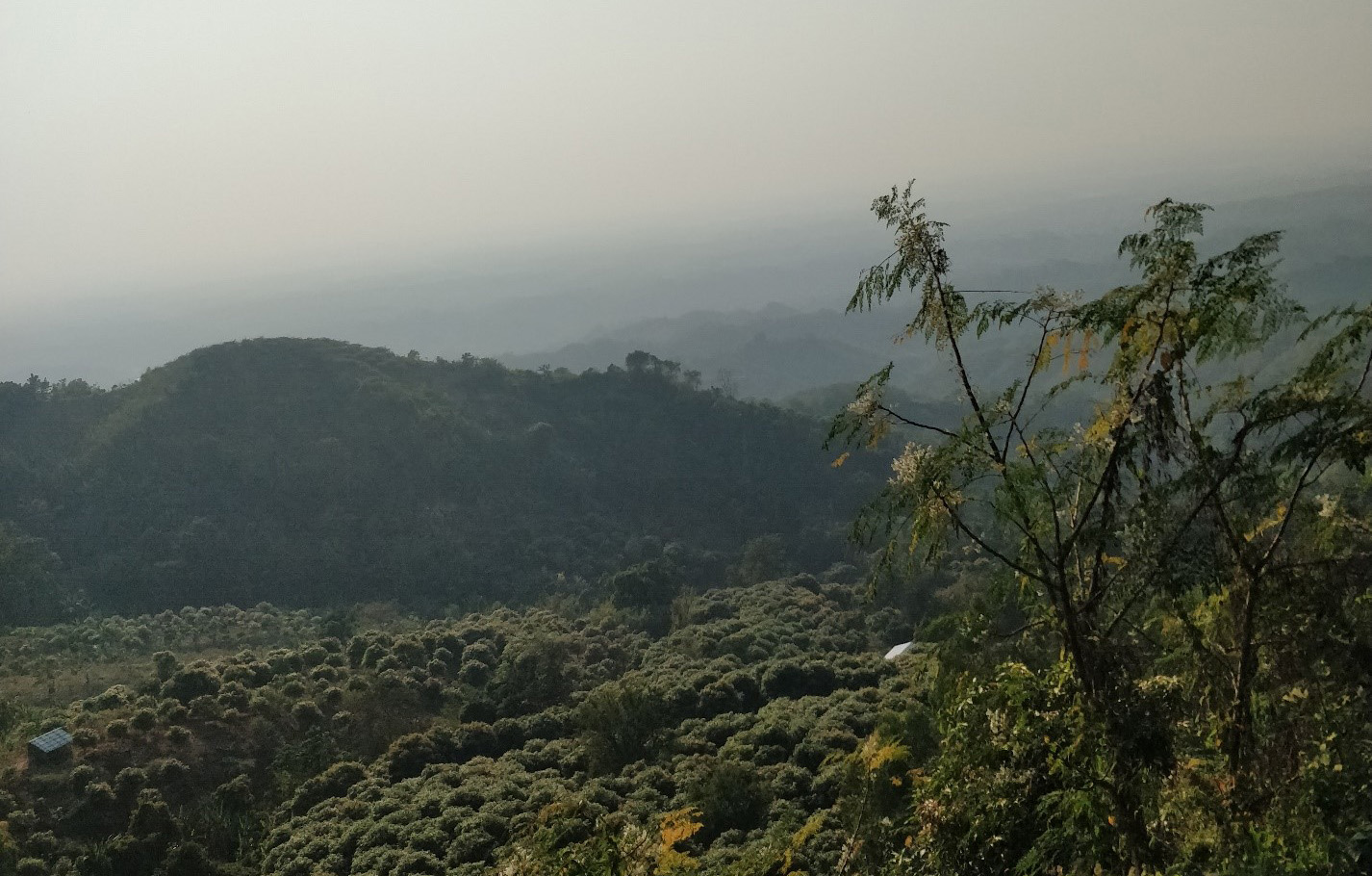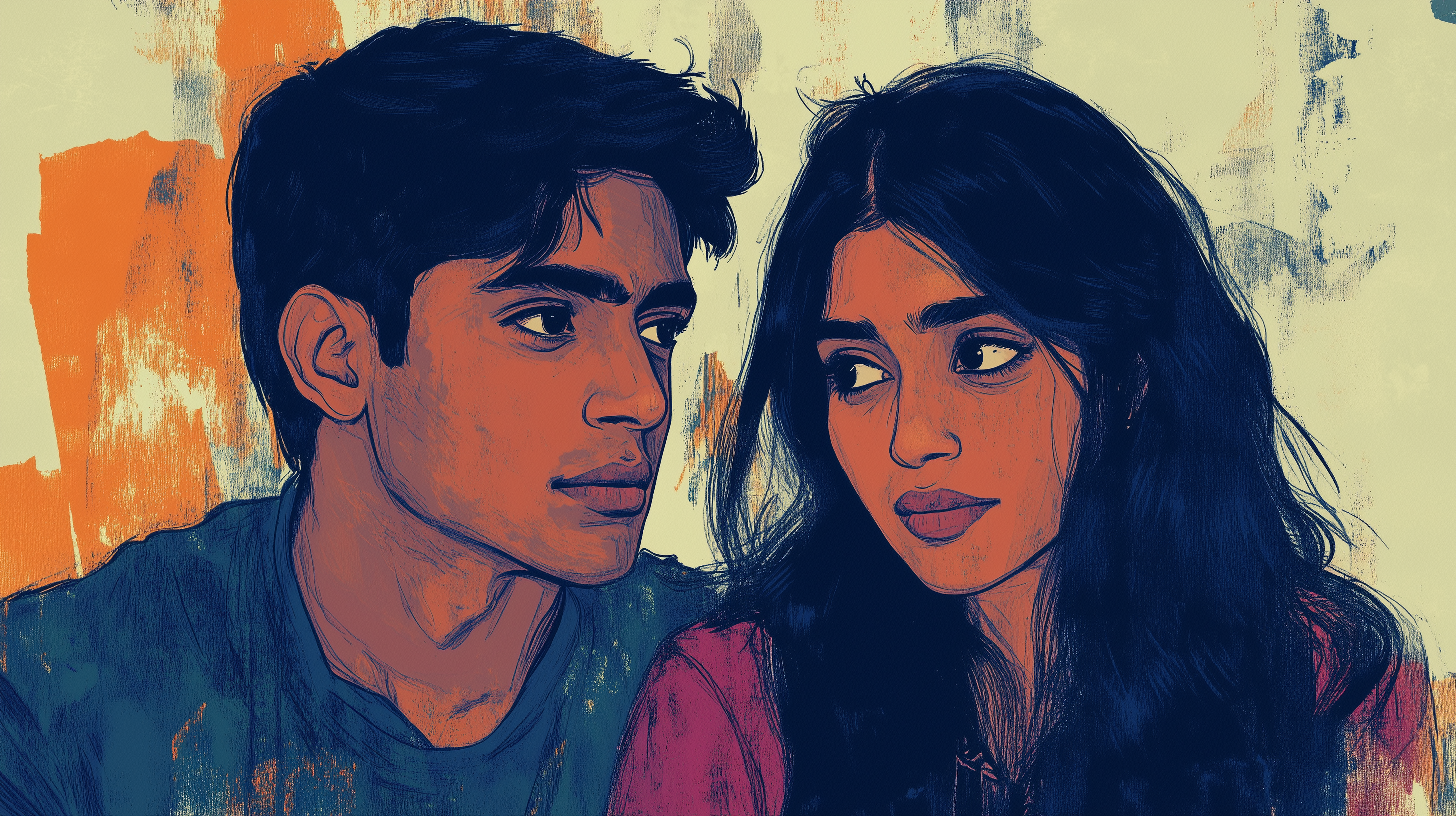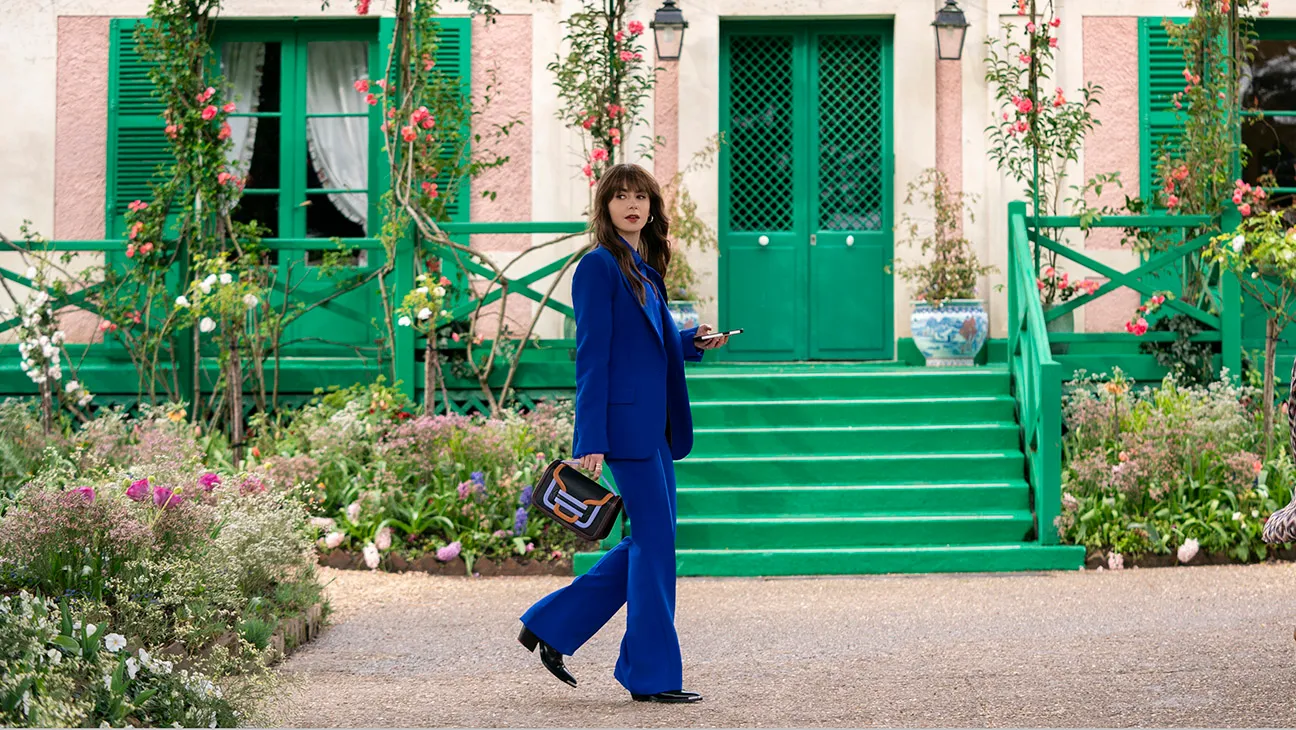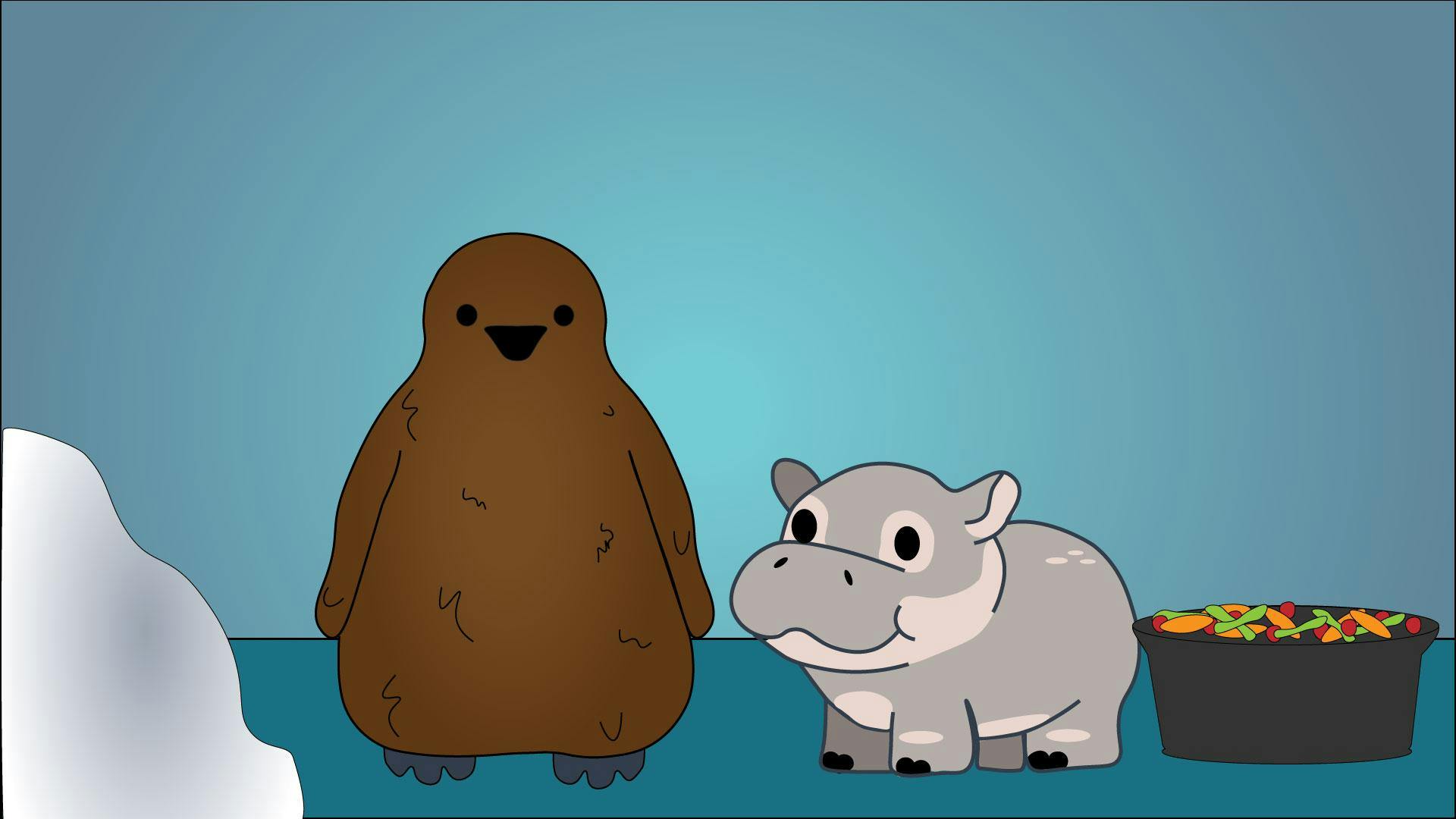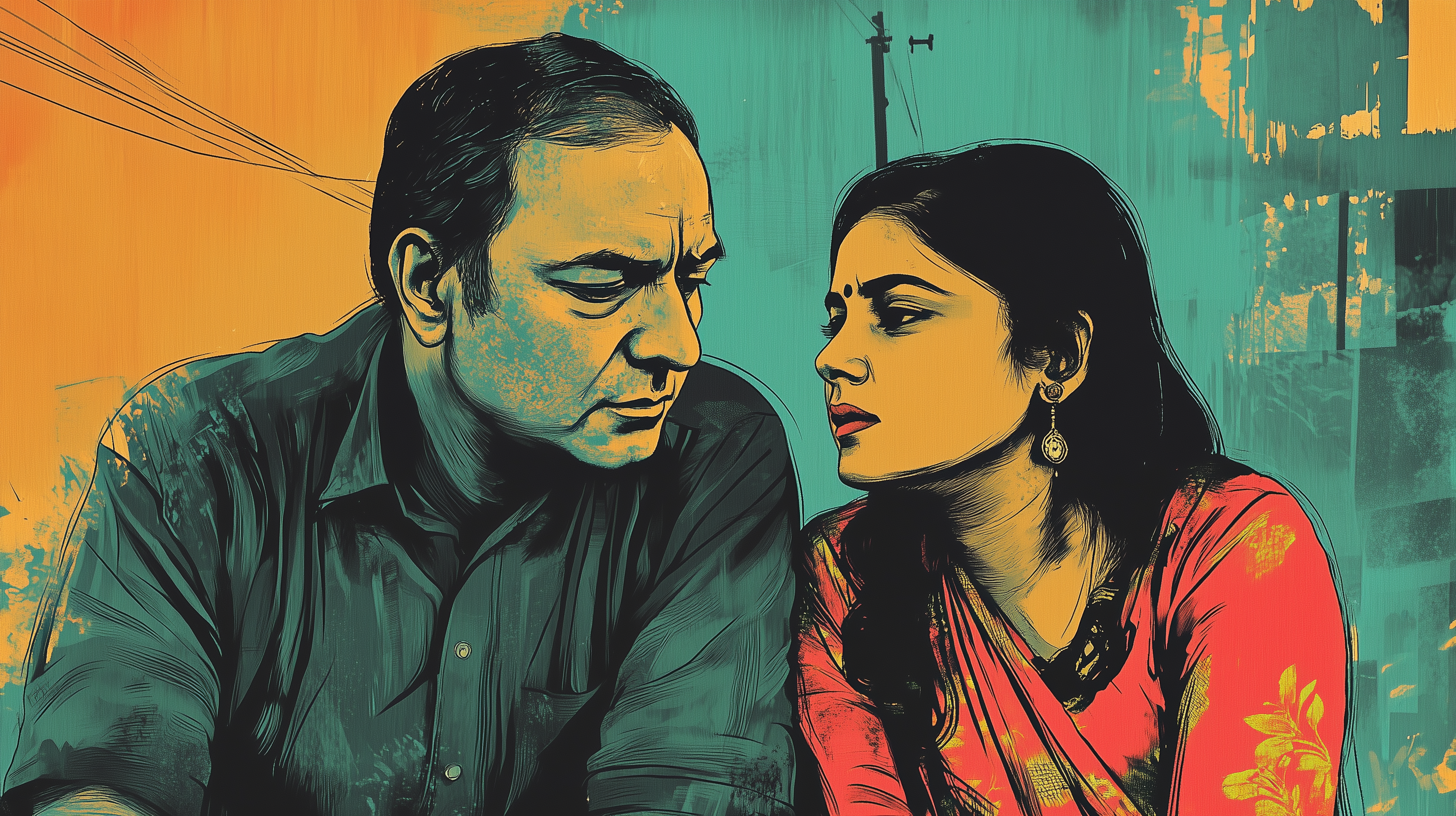This is the second part in a series on Bandarban called The Hills are Calling. Check out the first part, the Silent DebotaKhum, here.
We reached the bus stop again at 2:00 PM, and then we braced ourselves. The last bus to Thanchi was about to leave, and we were just in time. We paid the CNG driver and unloaded our luggage in a hurry. Due to the last-minute decision-making, we did not get a seat inside the bus. We climbed atop the roof and were on our way.
Our bus-fare was 200 BDT each. The same ride on a Chander-gari would’ve taken 3,500 BDT in total. Bandarban to Thanchi is a six-hour ride. We are fortunate to have obtained the closest remake of the Chander-gari experience possible. The entire journey was going up on a hilly road. The road is cobbled, but the area has minimal signs of civilization—vehicles along this road run at full-speed. We felt the wind banging against our bodies. One must always remember to carry a jacket in such conditions.
Think of a roller-coaster ride, but it does not end in five minutes. It keeps going up and down and up and down the hilly tracks. We felt like we were on such a ride. Furthermore, within half an hour, we were too high to see ground-level, and we saw the deepest since we were at a higher position than anyone else. Keeping that thought in mind, we knew that we had five and a half hours more of climbing. The description might sound scary, but we did not feel threatened at any point in our journey.
Within two hours, the ears had started blocking out the air due to low pressure, so we kept gulping. The road was clean and empty. On either side of the road were wild banana trees and bright chrysanthemums and hibiscuses. The flowers arched our way as if welcoming us into the Pahari lifestyle. A hut would be seen at long distances, a sentry standing in solitude amidst wild, hilly trees. We found only one school made of brick; everything else was hay.
We were stopped thrice, and officers at two of the check-posts kept our papers. The second stop was a BGB cafeteria held firmly in the middle of the hills beside the road, and this is where we had our lunch. The lunch tasted great, it was nearly 5 PM (nearly 10 hours since we had anything solid), and it weirdly cost us only 60 BDT.
Throughout the road, you’ll see only Pahari people or security officials, and they’d always be smiling at you and waving at you, welcoming you into their lands. We reached Thanchi at roughly 8 PM. We’d heard of this place called Thanchi Kutir (থানচি কুটির) before, that offers temporary housing to tourists. We asked around and soon found the place.
Thanchi, honestly, was a bit disappointing. There is not much to see in the tiny town, apart from a few shops that sell Fast-Moving Consumable Goods (FMCGs). I tried buying a bottle of Coca-Cola but got upset when I found out the only refrigerators available were deep fridges. Little did I know that fluids stay cooler than fridge temperature at room state here.
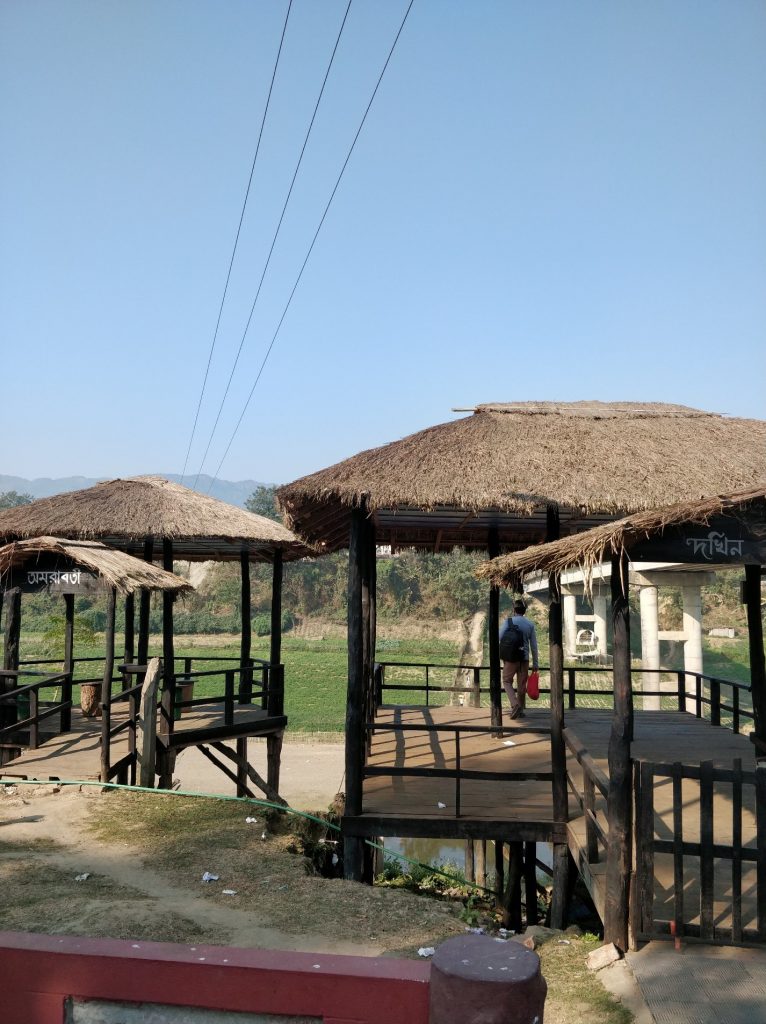
The “kutir” (huts where the tourists stay) and the hotels are poorly managed, and toilet facilities are harsh. The kutirs are single-roomed with no furniture, one lamp, and a power outlet.
It took us nearly half an hour to get hold of the manager. Inside the kutir, there were very thin blankets left for us. However, the blankets were not nearly enough to fight the chilling cold of the place. Also, the walls had holes. Furthermore, all establishments are built atop steep mounds of land, meaning that getting to the entrance of anywhere itself was a battle.
Furthermore, we did not get decent food anywhere. We ultimately walked into a random restaurant where we had rice, vegetables, chicken, and pulse. The environment was filthy. The amount we had to pay for the food that didn’t even satisfy got us philosophical about our financial decisions.
Despite the deplorable conditions here, there’s more to note. If you plan a trip to either of NafaKhum, AmiyaKhum, AliKodom, or PoddaJhiri, you cannot but pass through Thanchi. Thanchi is like a hub, everything links back here. The government tourism office is also situated here (also atop some hill), where you need to sign a bunch of paperwork before you set on your journey. Motor-bikes, Chander-garis, busses, CNGs, and jeeps that will take you to your destination rest here and wait for passengers. Thanchi is also a hub for finding yourself a guide if you have not already contacted one. So, Thanchi is unavoidable. At best, you can limit the duration of your stay here. By that, I mean, if you start for Thanchi immediately after you reach Bandarban from Dhaka, you could arrive by noon, be done with your paperwork, find yourself a guide, and already be on your way to NafaKhum. The problem here is that such meticulous time-management is not always possible when on tour, meaning that two out of five kafelas will find themselves spending the night in Thanchi Kutir.
The night was not kind on us. Throughout the entire tour, we depended heavily on packeted products like chips and biscuits. We had worn as many layers as we could and played card-games deep into the night. We found out that sleeping early is wise since the cold only rises deeper and deeper into the night. The cooler the temperature, the more challenging it is to fall asleep.
We woke up the following day at 6 AM. We packed our stuff and got ready for another journey, this time to Remakri. We called our guide Biraj Jolay Tripura, whom we had fixed from back in Dhaka. We paid the kutir manager 1000 BDT in total, and then we went to this small land owned by Bangladesh Tourism Corporation, where our guide had been waiting with the necessary paperwork. There were two tiny restaurants on the land. The food was cheap, and it also tasted decent. We had breakfast as Biraj took care of the papers. He then escorted us to another office of the Tourism Corporation, and an officer inside clicked a photo of us. He then took us to the docks. The docks are controlled by the BGB. Biraj took care of the paperwork there. An officer told us that renting a life-vest is compulsory from this point onwards. We paid 200 BDT for keeping a life-vest for two days.
We hopped on a motorboat at 11:15 AM, accompanied by the boatman and Biraj. The boats that carry tourists to Remakri are huge, and they make a lot of noise. If you can overlook the noise pollution, the ride is going to be pretty blissful for you. Make sure to sit in a comfortable position as this will be a long hour of sitting still.
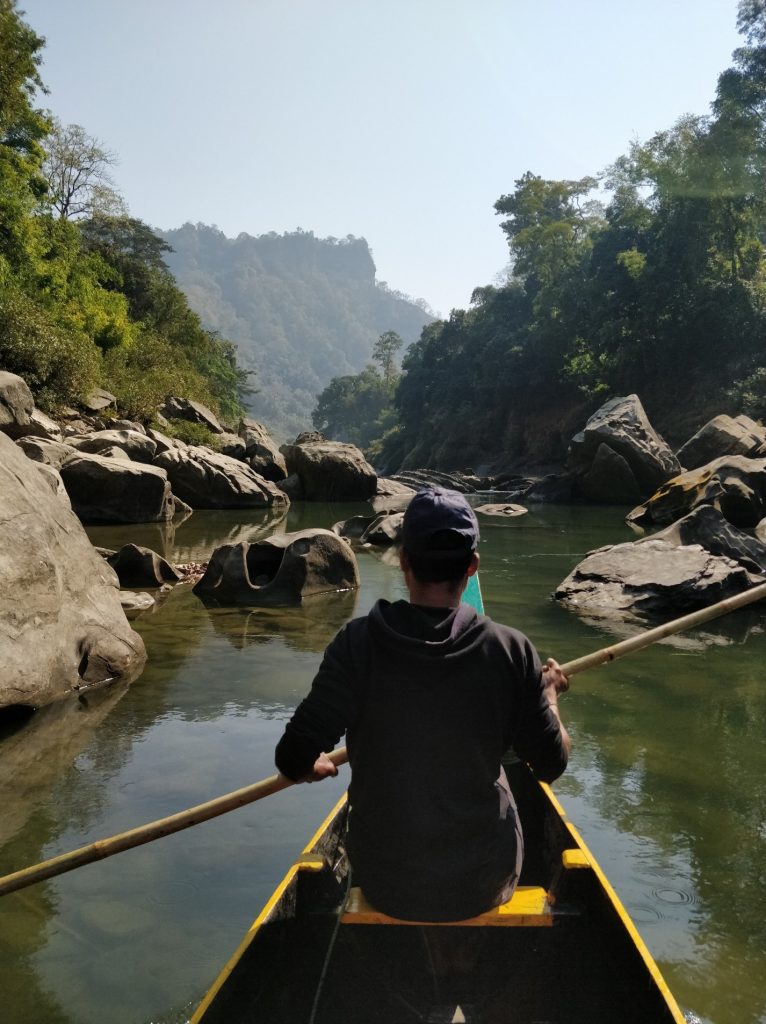
The water was clear as usual, and we could see the rocks under the stream. The lake, however, was anything but shallow. We noticed the water rushing against us, and the reason for this was that the lake fell downstream from AmiyaKhum to NafaKhum to Remakri to Thanchi. There were hills on both sides of the stream, and at instances, I honestly felt like I was in a scene from Assassin’s Creed Black Flag. The sky was clear, and the stream was blue. The trees on either side were as green as can be. And the rocks on the waterbed distorted our path from time to time.
We had to get off at this tiny land and walk a little through shops run by the people that live there until the boat came around the piece of land. We did this to ease pressure from the boatman while traveling upstream. We got back on the boat from the other side to complete our journey to Remakri.

We got off at Remakri, where a similar shop like those on the island had been waiting for us. The shops sell Uro-Colas and Lychee drinks. The Paharis are also very faithful people, the tourists usually leave their valuables at their shops, and they take care of their goods. However, we had the boat booked and therefore decided to leave our goods on the boat instead.
We rested in Remakri for a while and then got prepared. We had a long path of trekking ahead of us. Next stop: NafaKhum.
(To be Continued…)
